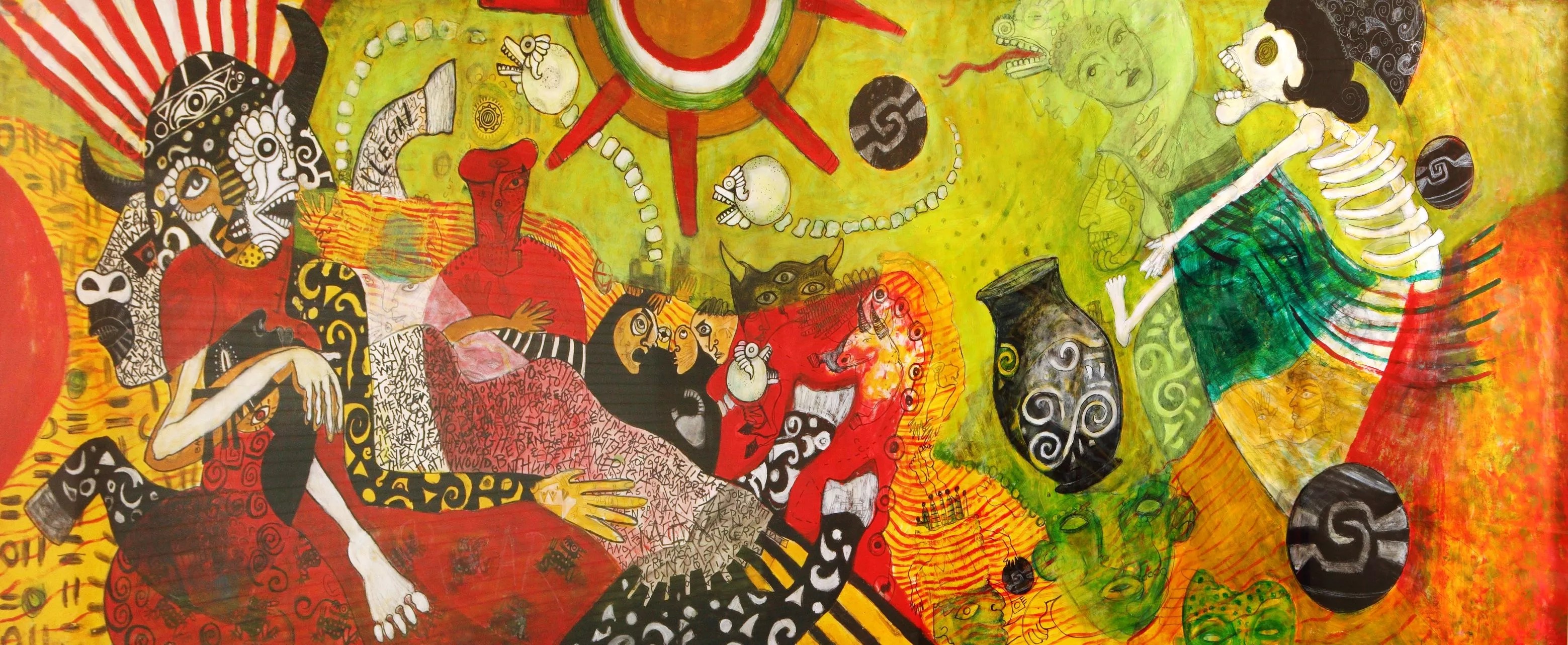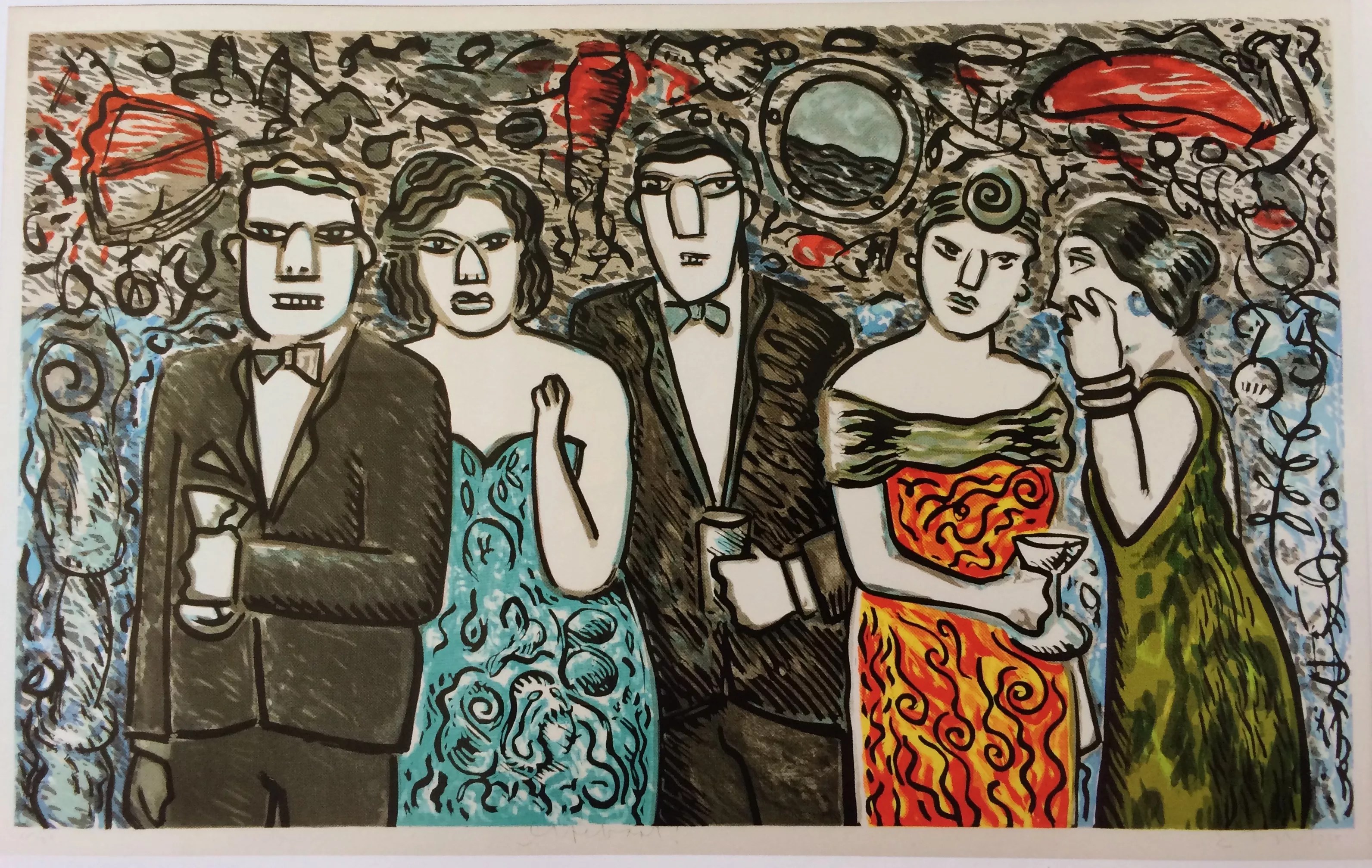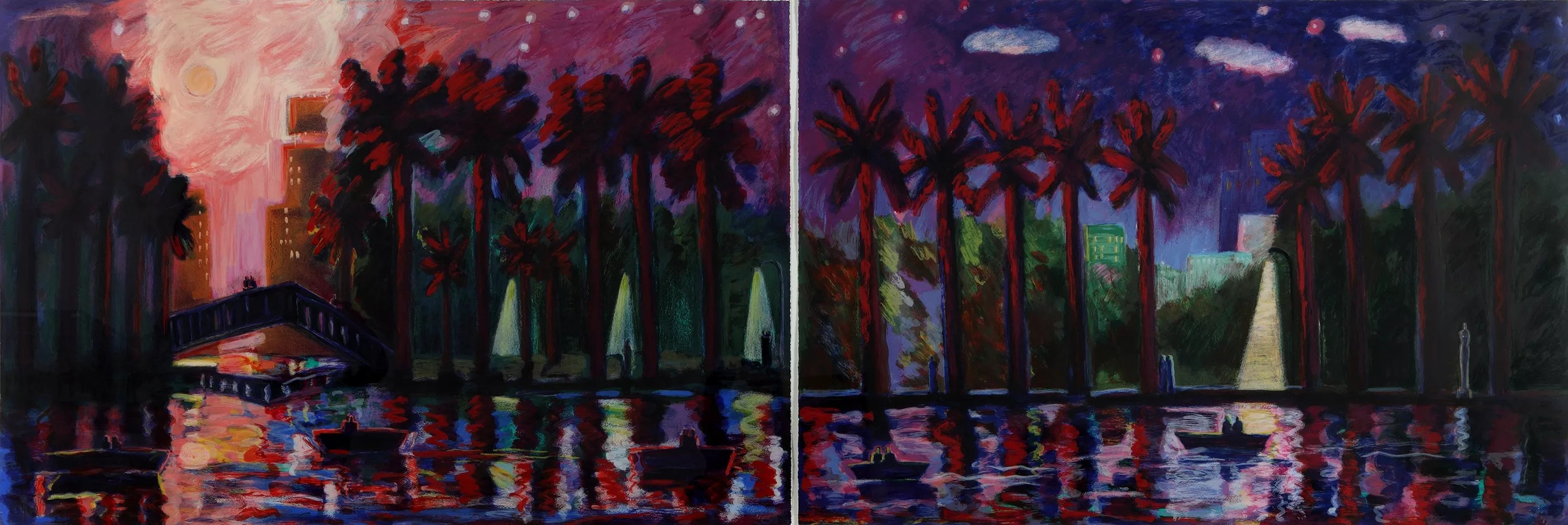
CiCi Segura Gonzalez

Audio By Carbonatix
As with so many cultural institutions, the Colorado Springs Fine Arts Center has been closed more often than not in 2020; it finally reopened a few weeks ago after being shut down since March. But the shows must go on, and while many Colorado museums are currently shut down under Level Red COVID-19 restrictions, the CSFAC is moving forward with the unveiling of an important traveling exhibit on Friday, December 4.
That show is Papel Chicano Dos: Works on Paper From the Collection of Cheech Marin, curated by Melissa Richardson Banks of CauseConnect; it’s the last stop of a nine-city U.S. tour.
Marin is, of course, one half of the legendary comedy team Cheech and Chong. Wildly popular, the irreverent pair amassed individual fortunes with club dates, recordings, film and television. Early on in his career, back in the 1970s, Marin began to devote some of his money to collecting art by Chicano artists. This was really smart, as the field was wide open, there were few competing collectors, and the material was relatively inexpensive. Marin’s prescience allowed him to assemble one of the largest collections of Chicano art in the world, holding more than 700 paintings, prints, drawings, sculptures and videos.
The Chicano art movement emerged in the late 1960s as part of a broader interest in the art of identity, with other kindred movements coming out of the feminist and African-American communities, among others. The Chicano artists were inspired by the post-revolutionary muralists in mid-century Mexico, particularly Los Tres Grandes: Diego Rivera, David Alfaro Siqueiros and José Clemente Orozco. These artists explored the struggles of the Mexican people by visually addressing social and racial issues. The Chicano artists, active mostly in the western United States, including Colorado, picked up the topical threads from their mentors in Mexico and translated their forms, themes and narratives into a specifically Chicano vocabulary. Political activism has long been a key component of Chicano art.

Gronk
Taking the idea of community, which is essential to the movement, Marin has written, “I am collecting this art to share it with the people.” Embracing that spirit, Marin has promised to donate much of his collection to the newly established Cheech Marin Center for Chicano Art, Culture & Industry. In that pursuit, the former downtown public library in Riverside, California, is being converted to house the center, which will be a satellite of the Riverside Art Museum.
The building, a 1964 formalist design by hometown architect Bolton C. Moise Jr., is being preserved so that its distinctive mid-mod features, notably the dramatic sculpted “dove” screens that hang from the cantilevered eaves, will be saved even while a new state-of-the-art cultural facility is being slotted inside. Nicknamed “The Cheech,” it is projected to open in late 2021.
The show at the CSFAC, Papel Chicano Dos, includes watercolors, pastels, prints and mixed-media works, and although it is not meant to be encyclopedic, pieces were chosen from Marin’s collection to survey trends in Chicano art of the past forty years. Papel Chicano Dos is being overseen at the CSFAC by Polly Nordstrand, curator of Southwest art.
While Nordstrand says there is no distinct point of view that connects the pieces in Marin’s collection, she notes that what’s “really obvious is the diversity of styles and approaches that he collected. The art he collected reflects the varied experiences of Chicano life and the lives of the artists.” She explains that Marin “got excited by the art so early on that he had access to many of the greats then working in Los Angeles.” This access meant that he was able to snag many important pieces. “There’s such a richness to the works he collected, which makes the show a significant visual experience. The more you look at pieces by some of the artists, like Gronk, the more you can see how they pushed their work beyond the canons of Chicano art, moving into more globally informed practices.”
Nordstrand has been working on the show for the past two years, at least, and the plan was to get Marin to come out to speak during the course of the exhibit, but COVID-19 put a stop to that.
“We knew that Marin had business interests in Colorado,” Nordstrand says with a laugh, “and he’s up front about what that business is, but we also know that he’s interested in including Colorado Chicano artists in his collection,” adding that there are none in the show.
Nordstrand had planned to make studio visits to local Chicano artists in advance of the show, with the idea of scoping out potential recommendations for acquisition by the Marin Center, but social distancing also scuttled that. Nordstrand hopes that Marin will be able to travel to the CSFAC before the exhibit closes this coming summer, and will maybe be able to check out some local artists then.

Pablo Andres Cristi
Despite the show only including works on paper, many are major mural-sized pieces, and even those that are more modestly scaled convey powerful statements about the multifarious nature of Chicano identity. Some of the imagery nods, as expected, to a Día de los Muertos aesthetic in which the compositions are crowded with skulls and mystical figures and animals. This approach is seen in CiCi Segura Gonzalez’s resplendent “Soy Chicana,” a mixed-media work on gessoed paper. There’s an ancient Meso-American vibe to the drawings, but the colors give it a more contemporary Mexican feeling. Also, looking closely, there’s more than one tip of the hat to Picasso in the depictions of the horned animals that peek at the viewer from behind the main figures, indicating that Spanish art is yet another ancestor of Chicano art.
References to Roman Catholicism, Mexican style, is also not surprising, as shown off in “If La Virgen Returned,” by Pablo Andres Cristi, done in a street-art style with spray paint that creates vibrant and freely applied strokes of color. In the painting, Our Lady of Guadalupe, wearing a hoodie like a gangster, has appeared to a crowd made up of kneeling Mayans, Mexican campesinos and, in the left foreground, an apparent gang member, his muscular back covered with a tattoo of La Virgen that mirrors the apparition floating on the far right. It’s really sharp.
The Gonzalez and the Cristi are distinctly different from one another, though both cogently convey the idea of Chicano art. But Marin’s collection also includes works by artists that go beyond these familiar topical and stylistic standards of the movement. A good example of this is the diptych “Mystery in the Park,” by the late Carlos Almaraz, a pioneer in the street art movement in Los Angeles. In this serigraph, Almaraz depicts a nocturnal scene of boats on a palm-tree-lined canal with the city rising above it. The scene is dominated by dark saturated colors punctuated by glowing bright shades that emanate from the moon over the skyline, and from the row of street lamps.

Estate of Carlos Almaraz
Even further outside the Chicano traditions is “Lifeboat,” a color lithograph by the renowned Gronk, the artist name of Glugio Nicandro. The artist has rendered a lineup of five well-dressed party-goers, two men and three women. Given the implicit edginess of the title and the fact that one of men, on the left, seems to be crushing a beer can, while on the other end, a woman is whispering into the ear of another, Gronk has infused the piece with an aura of tension.
Marin might be a pretty funny guy, but as shown by Papel Chicano Dos, he’s also a serious connoisseur. And considering the forthcoming Cheech Marin Center for Chicano Art, Culture & Industry, he’s a generous benefactor, as well.
Papel Chicano Dos is installed in the Holaday and Seagraves Galleries on the second floor of the CSFAC; tickets are included with general admission. Timed reservations are required, as the CSFAC is currently limited to 10 percent capacity. The show runs through June 26, 2021; to make reservations, go to the Colorado Springs Fine Art Center website.